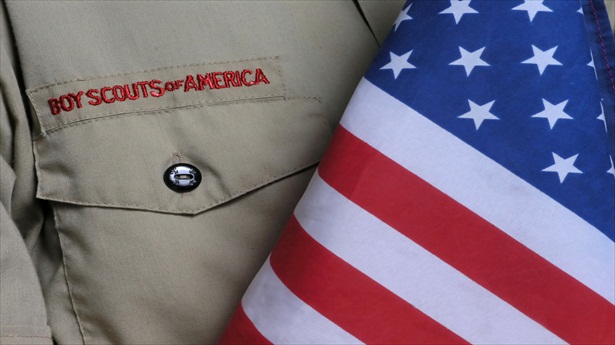The curtain that has long shielded the extent of sex abuse in some youth-serving organizations was lifted a little higher today with the release more than 1,200 files about alleged molesters in the Boy Scouts of America (BSA).

Some 1,247 Confidential Files on people banned from Scouting for alleged sexual misconduct with children from 1965-85 were put online in fulfillment of a court order in Oregon. Their release comes a week after a Seattle attorney released a database that describes nearly 2,000 abuse cases in the BSA from 1971-91.
The documents add to a small but growing public trove of once-secret information about abuse in youth-serving institutions – including statistics, offenders’ names and documents that describe the offenses. The public now has easy access to extensive information about alleged sex offenders in the Scouts, the Catholic Church, several youth sports and some public school systems. This chart shows what’s available and provides links.
Victims’ advocates say such public revelations have brought justice to victims of institutional abuse, empowered victims to come forward and educated the public about how molesters operate in youth organizations. “The paper trail of files clearly documents the long history of sexual abuse within Scouting, as well as the pain and suffering caused to the victims by the Scout leaders,” said Matthew Stewart, a victim who settled a lawsuit with the BSA in the 1990s.
The BSA, which fought the release of its files, issued a statement saying that making them public might “negatively impact victims’ privacy and have a chilling effect on the reporting of abuse.”
What the BSA Files Show
The BSA has long kept Confidential Files (also known as Illegible Volunteer files) on people that it banned as inappropriate to lead children; the main reason is alleged sexual misconduct.
This chart shows the number of people banned for alleged sexual misconduct each year from 1947-2004.
Since the 1980s, four judges overseeing lawsuits by abuse victims have ordered the BSA to submit Confidential Files into evidence. These four sets of files cover various years, some of them overlapping. The files contain basic information about the alleged molesters and the offneses, supplemented by memos from local Scout officials, police reports, newspaper reports, and statements written by offenders, victims and parents.
This brief chronology explains each set of files and shows how they were gradually rolled out to build into a public database about abuse in Scouting. This Youth Today article tells the story of how the files became public and have haunted the BSA for more than two decades.
Here is what’s new in the past week:
1. Oregon attorney Kelly Clark today posted online the 1,200-plus files that the BSA submitted for a lawsuit in which Clark was the plaintiff’s attorney. In 2010 the jury in that case awarded the victim $20 million, and this year the Oregon Supreme Court ruled that the files in that case are public record.
Clark was charged with scanning the paper files into PDFs and making them publicly available, after redacting many names in the files (such as those of victims, but not of the alleged molesters.) The files cover 1965-85.
2. Another attorney, Tim Kosnoff of Seattle, Wash., used one of the previous sets of files to create a database that provides details about each case, including the names of the offenders and some details about the offenses. Last week Kosnoff posted that database online. It covers 1971-91.
Together, the various sets of Confidential Files show about 5,000 people banned for sex offenses from 1947 through 2004. The actual number of people banned is higher. BSA officials have testified the company routinely purged from the Confidential Files anyone who was dead or over age 75.
The files show concern among local Scout leaders about keeping dangerous people away from kids, but what’s gotten the BSA in legal trouble, and fueled heavy media coverage, are cases where Scout officials let molesters go away quietly without prosecution, and acted to hide the cases from authorities and the public. A few examples from the files posted by Clark today:
- In a 1970 case from Maryland, a scout leader admitted abusing several boys, but was set free from prosecution because he promised to see a doctor and because one of the fathers and “personally knew Mr. White for a long time.” The troop committee worked “to keep it from getting to [sic] much publicity both for the boys and for scouting.”
- In a 1969 case from Detroit, local Scout officials told national headquarters that because a leader who molested several Scouts was undergoing “treatment for his problem” with a church leader, “every opportunity should be extended for his return to Scouting.”
- In a 1966 case from Ohio, a leader who was kicked out for helping Scouts masturbate was readmitted on a “probationary basis” because he had put the earlier incident “behind him.”
In recent years the BSA has vastly improved its system for screening volunteer leaders and for educating staff, parents and boys about the potential for sex abuse. Nevertheless, the problem will never fully go away. For example: Last month, former Cub Scout leader George Fout of Florida pled guilty to 27 counts of possessing child pornography. He still faces charges of molesting several children he met through Scouting.
And judges in several ongoing lawsuits are deciding whether to make more set of files public.
To see detailed public reports and databases about molesters in youth groups, click here.



























